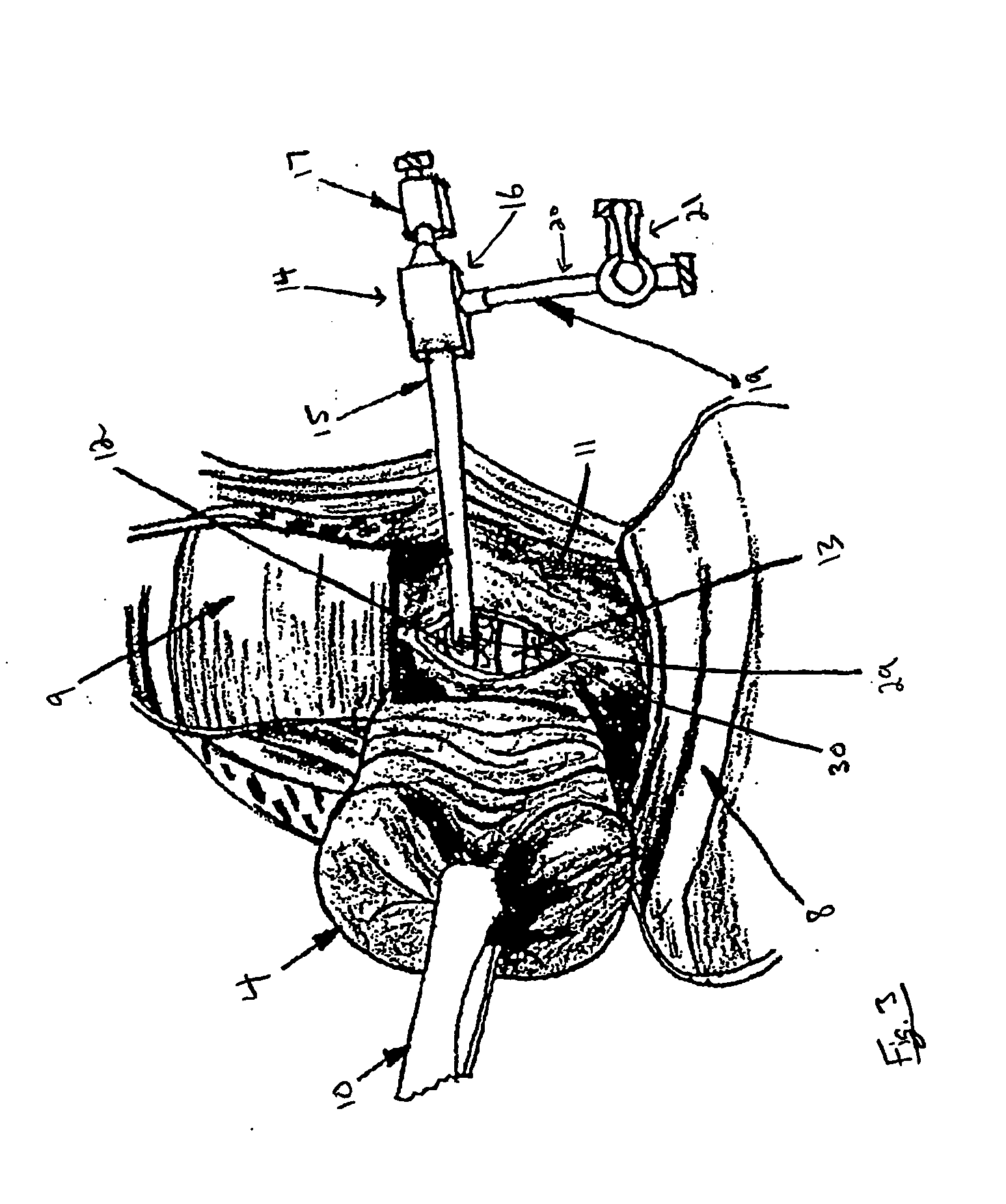Method and device for canulation and occlusion of uterine arteries
a technology of uterine arteries and cannulation, which is applied in the field of methods and devices for cannulation and occlusion of uterine arteries, can solve the problem that methods require a relatively high level of catheterization skill
- Summary
- Abstract
- Description
- Claims
- Application Information
AI Technical Summary
Benefits of technology
Problems solved by technology
Method used
Image
Examples
Embodiment Construction
[0018] The present invention is directed to a simplified method and device for treating fibroids without requiring the same high level of catheterization skills required for the prior methods. FIG. 1 shows the structure of the female reproductive system generally seen at 1. The uterus 2 is superior to the vagina 3, with the cervix 4 comprising a lowermost portion of the uterus 2, which connects to the vagina 3. A lowermost portion of the cervix 4 is exposed to the vagina 3. The uterine blood vessels 5, located superior to the vagina 3 and inferior to the uterus 2, include a series of uterine arteries 6 and a series of uterine veins 7.
[0019] In accordance with the present method, FIG. 1 depicts an initial view of the uterine blood vessels 5. As seen in FIG. 2, visualization of the cervix 4 may be maximized by inserting a speculum 8 into the vagina 3 at a lower position while using a retractor 9 at an upper position of the vagina 3. As would be understood by those of skill in the art...
PUM
 Login to View More
Login to View More Abstract
Description
Claims
Application Information
 Login to View More
Login to View More - R&D
- Intellectual Property
- Life Sciences
- Materials
- Tech Scout
- Unparalleled Data Quality
- Higher Quality Content
- 60% Fewer Hallucinations
Browse by: Latest US Patents, China's latest patents, Technical Efficacy Thesaurus, Application Domain, Technology Topic, Popular Technical Reports.
© 2025 PatSnap. All rights reserved.Legal|Privacy policy|Modern Slavery Act Transparency Statement|Sitemap|About US| Contact US: help@patsnap.com



